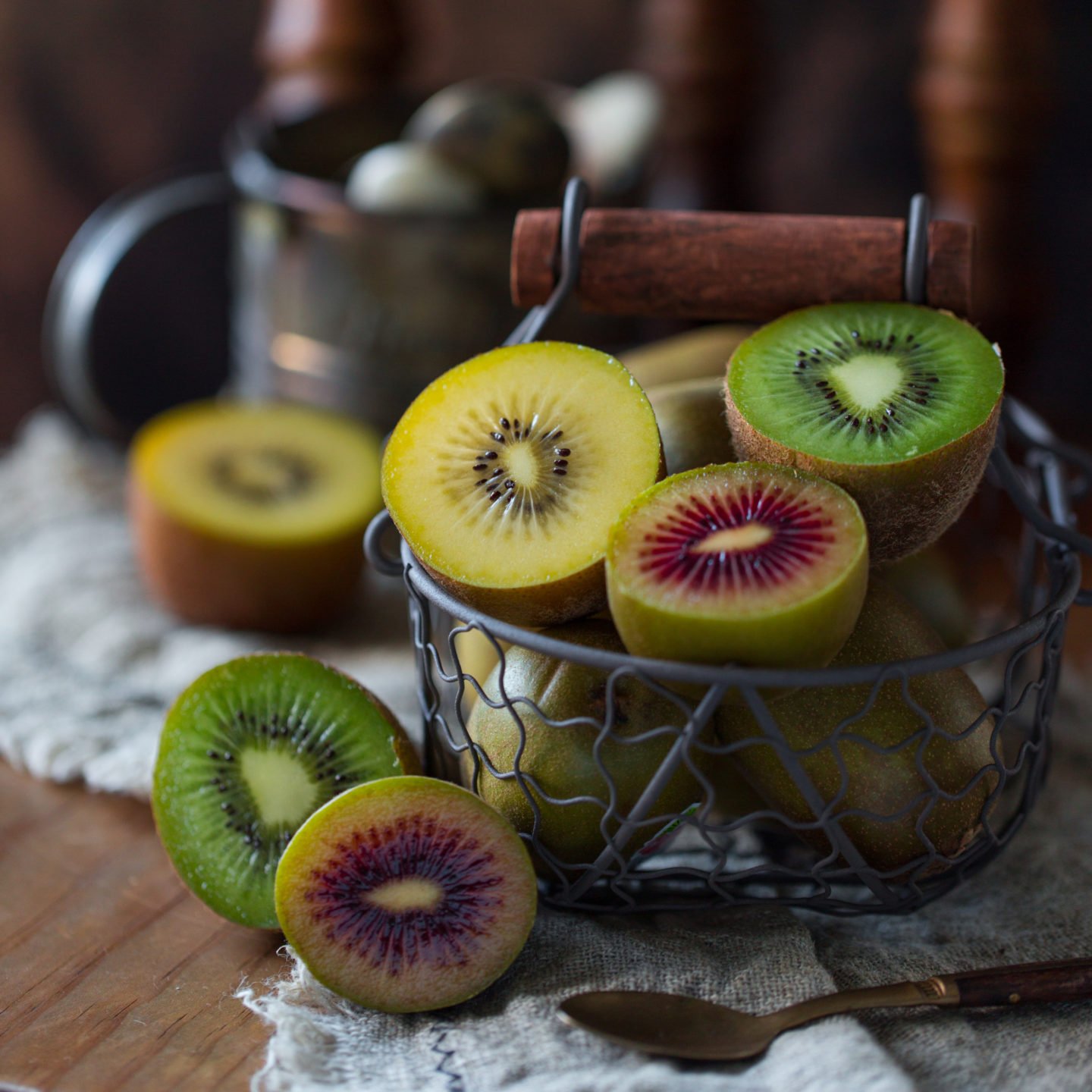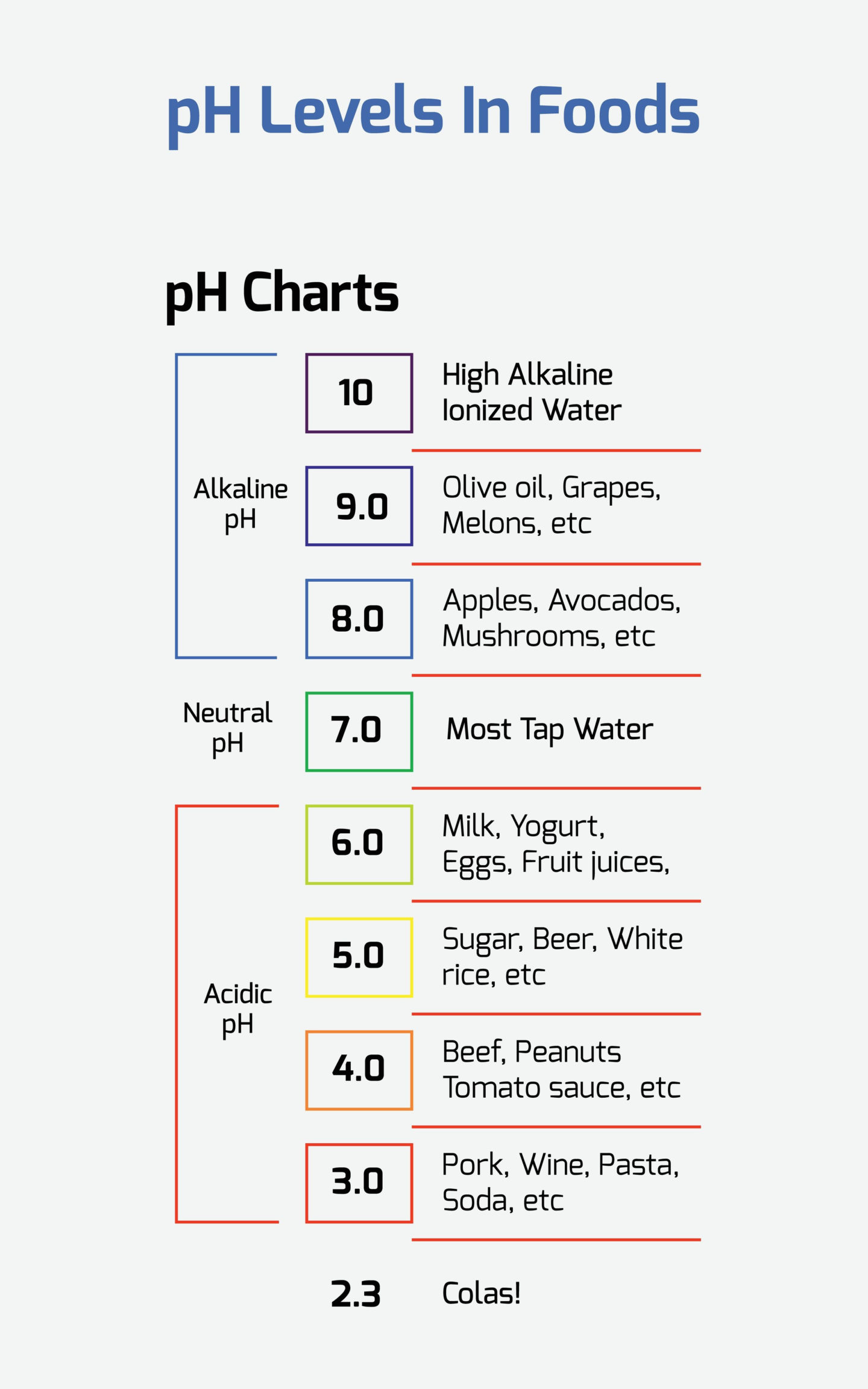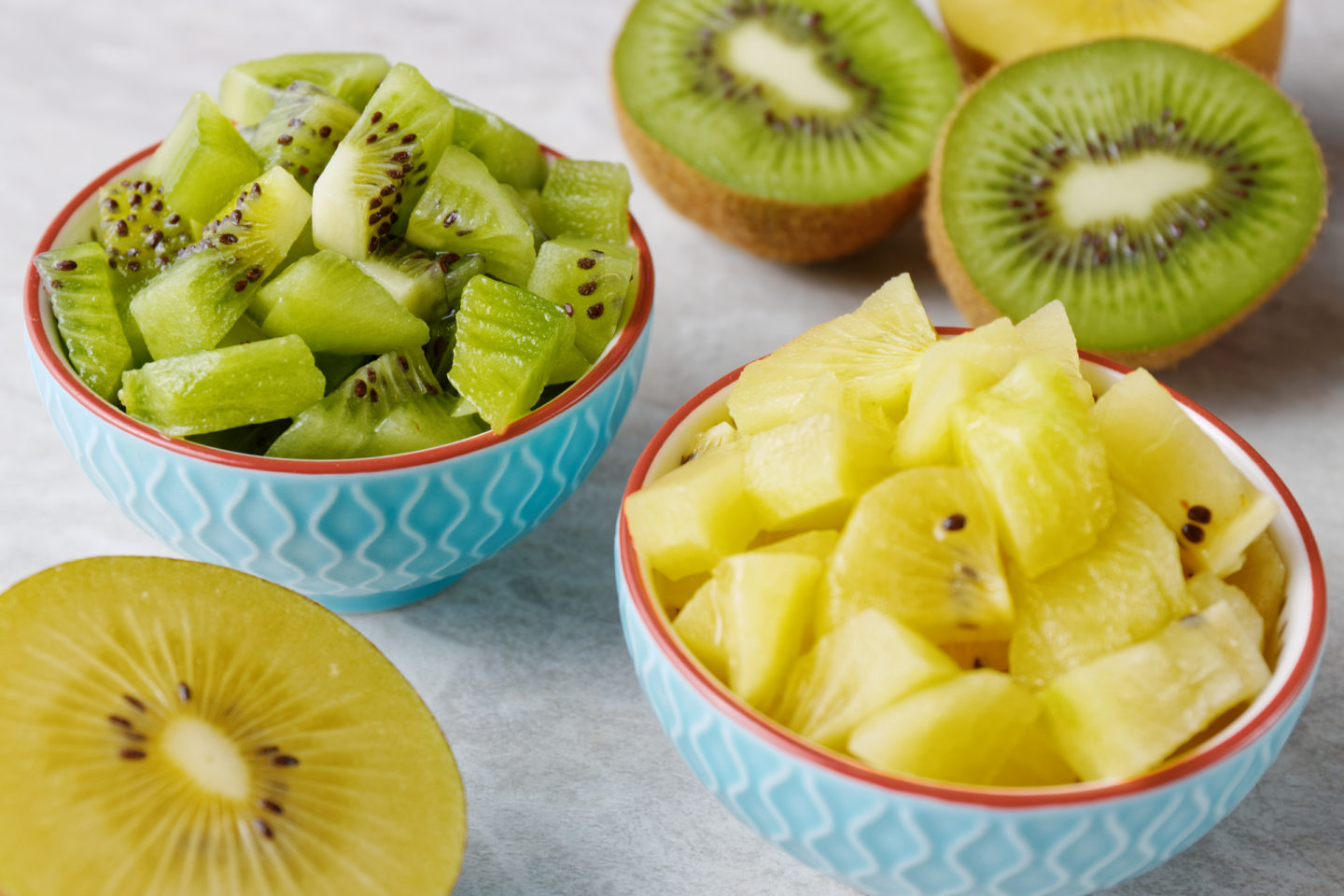The kiwifruit is native to China. Although it has been grown there for centuries, it is now grown commercially worldwide. Also known as the Chinese gooseberry, the average kiwifruit is similar in size to an extra-large chicken egg and has a sweet and tangy flavor.

Although kiwifruits aren’t as popular as other fruits like bananas or strawberries, they are commonly found in local grocery stores. But the big question is, is kiwi acidic? Perhaps due to its tangy flavor, we can easily guess it is an acidic fruit.
A ripe kiwi has a pH that's between 3.1 and 3.96, making it an acidic fruit. Despite being an acidic fruit, the kiwifruit is very nutrient-dense and offers many health benefits.
This article provides information regarding understanding pH levels, the acidity levels of the kiwifruit, and other important nutritional information.
Table of Contents
Understanding pH Levels

pH levels range from 0 to 14. Substances with a pH of 7 are neutral, like water. A pH above 7 means that it is basic or alkaline, and a pH below 7 means that the substance is acidic.
For instance, the pH of the human stomach acid is 1.5 to 3.5, which is highly acidic. Some pH levels of common fruits include 2.0 to 2.6 (lemon juice), 3.2 to 4.0 (pineapples), 3.12 to 3.33 (blueberries), and 3.69 to 4.34 (oranges).
What Makes Kiwifruit Acidic?
Actinidia deliciosa, or the fuzzy kiwifruit, has a relatively high total acid content, containing 40–60% quinic acid, 40–60% citric acid, and 10% malic acid. The presence of high quinic acid in kiwi fruit leads to high concentrations of chlorogenic acid, folic acid, vitamin K, and other phytochemicals.
Quinic Acid
Quinic acid is a plant-derived acid not produced by the human body. Being found in high concentrations in kiwifruits represents a unique occurrence in the plant world. They contribute to the fruit's flavor, sugar and acid balance, and health-giving properties. Kiwifruit is not the only fruit containing quinic acid; coffee beans, apples, and peaches also contain it.
Quinic acid enhances antioxidant activity by nutritionally supporting the synthesis of tryptophan and nicotinamide in the gastrointestinal (GI) tract, thus enhancing DNA repair.
Citric Acid
Citric acid is most commonly found in citrus fruits like lemons and limes, giving them a naturally sour and tart taste. While citric acid is also present in kiwifruits, it can be found at a lesser concentration in citrus fruits. For this reason, kiwifruits are classified as non-citrus exotic fruits.
Citric acid has many health benefits, including helping metabolize the body's energy for daily use, enhancing nutrient absorption of some minerals, including calcium and magnesium, and protecting against kidney stones.
Citric acid is also one of the most common food additives used in the food industry to enhance flavor, boost acidity, and preserve ingredients.
Malic Acid
As expected, malic acid contributes to the acidity of the kiwifruit. The malic acid levels in kiwifruits are maintained when stored at 0 °C. Still, when stored at 4°C, the acid perception increased with a decrease in sweetness perception, most probably correlated with an increase in malic acid concentration.
Malic acid is used in foods, cosmetics, and even medicine. Although there aren’t enough scientific studies to prove their efficacy, people usually use malic acid to treat dry mouth, acne, fibromyalgia, fatigue, wrinkled skin, chronic fatigue syndrome, and other medical conditions.
Are Kiwifruits Healthy?

Kiwifruits are one of the healthiest fruits due to their nutritional content. Each green kiwi or golden kiwi contains high amounts of vitamin C (ascorbic acid), vitamin E, vitamin A, antioxidants, potassium, phosphorus, dietary fiber, and many more. One interesting thing to mention is that a kiwifruit weighing 100 g typically contains between 80-120 mg of vitamin C. That is almost three times the amount of vitamin C in a typical orange fruit (53.2 mg in 100 g)!
Can Kiwifruits Be a Cause of Allergies?
Kiwifruits are a common cause of allergies. When a person has a kiwi allergy, the first signs are usually mild. They include a prickly, itchy, or tingling feeling in and around the mouth. A rash may also develop where the skin has made contact with the kiwifruit. Severe allergic reactions may also occur, leading to anaphylaxis and needing prompt medical attention.
All kiwifruit varieties, including green kiwifruit, golden kiwifruit, and even fuzzy kiwifruit, can cause allergies, and eating kiwifruit should always be avoided by people with a kiwi allergy. Checking the ingredients in foods such as smoothies, fruit salads, frozen fruits, gelato, ice cream, and even juices can help you avoid triggering your kiwi allergy if you have one.
Can People With GERD Eat Kiwifruits?
If you have any medical condition associated with acid reflux, you may wonder if kiwifruits are safe. The good news is, it is! Due to their vitamin C and fiber content, kiwifruits are generally safe to consume for people with acid reflux or GERD.
But remember that moderation in eating these acidic foods is still essential. If you ever feel any acid reflux symptoms after eating kiwifruit, it’s best to limit your intake or refrain from eating them.
Related Questions
Although kiwis contain acids, they only comprise 1–3% of their total weight. The most common acids found in kiwis are quinic acid, malic acid, and citric acid.
Citrus fruits are the most acidic fruits. Lime, lemon, grapefruit, and oranges have high acid content, as do pineapples, plums, peaches, blueberries, and tomatoes.
Both coconuts and watermelons have a pH level of more than 5, making them less acidic than most fruits. Although this pH level does not fall on the alkaline scale, the fresh fruit provides alkalinizing effects once ingested and brings a handful of health benefits.
No. A kiwi is not a citrus fruit but a berry that grows on a vine, also known as the Chinese Gooseberry.

Leave a Reply